Sven Boenicke’s cable products reviewed at this site shared one component that contributed to their excellent performance. Now let’s find out whether his dearest power cord – Boenicke Audio M3 – based on the same ingredient acts accordingly. Enjoy!
Silence squared
Many mails sent my way are essentially questions about how two specific audio products compare and which one I’d consider as better. Since I’m often asked about those I haven’t even heard, I can’t possibly know. When I do, one’s expectations, taste, nearby hardware, available space, financial reach etc. still factor in and prevent straightforward answers. The way I see it, most expenses outside that critical context are short-term gratification boosters at their best and mistakes at their worst. New audio arrivals are exciting and fun of course, but living from one brief dopamine burst to another with greyness in-between isn’t. That’s why to maintain a constant happiness level I heavily focus on devices I own, not those I don’t. By doing so I learned how to avoid their limitations, exploit traits and finally secure enough synergy points to enjoy sound they make as a system. That big picture keeps the upgrade itch at bay, but to actually see it I had to first adjust my optics from ballistic to holistic and that was key. Some manufacturers share this view and construct their rosters with mutual compliance in mind. Boenicke Audio is one of them.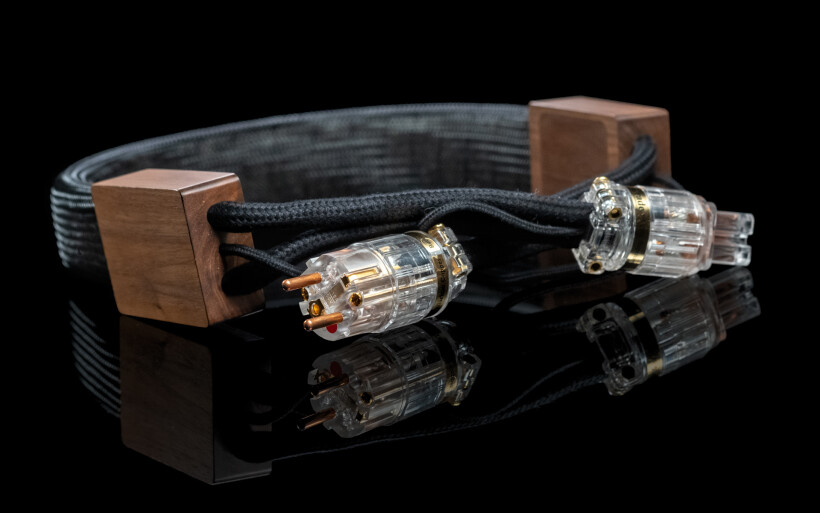 Many audio houses specialize in just one component type, quite a few grow extra branches from that tree and some separate their lineups across standalone differently profiled brands. Here Aavik (electronics), Ansuz (accessories and cables) and Børresen (speakers) all under Audio Group Denmark’s umbrella are a spot on example. Although this report’s Swiss company Boenicke Audio has been known primarily for speakers and still is from what I can tell, I won’t be surprised if that status quo changes in the future. Sven Boenicke’s current roster is far more diversified than it was say five years ago and rather busy with hardware that communicates his enjoyably wholesome approach to audio.
Many audio houses specialize in just one component type, quite a few grow extra branches from that tree and some separate their lineups across standalone differently profiled brands. Here Aavik (electronics), Ansuz (accessories and cables) and Børresen (speakers) all under Audio Group Denmark’s umbrella are a spot on example. Although this report’s Swiss company Boenicke Audio has been known primarily for speakers and still is from what I can tell, I won’t be surprised if that status quo changes in the future. Sven Boenicke’s current roster is far more diversified than it was say five years ago and rather busy with hardware that communicates his enjoyably wholesome approach to audio.
Today Boenicke Audio’s site lists four speaker models (W5, W8, W11 and W13) available in three tiers (standard, SE and SE+) plus W22 top shelf floorstander, five RCAs (IC1, IC2, IC3, IC3 CG and IC3 CG PRO), their three speaker siblings (S1, S2 and S3), two power cords (M2 and M3) and three accessories; a Power Gate distributor box, Corner Cure room tuning device and Swing Base supports tailored for Sven’s speakers. Then there’s also his electronics department that includes a top shelf v3 line stage and entry-level p1 stereo power amp plus five upcoming developments on top of that; two DACs and one of each a pre-, power- and integrated amp. One could put together nearly a complete setup from these ingredients and accordingly to the poker-faced Swiss’ vision I’m sure, but their existence all by itself implies his company’s fully blown expansion and is the main takeaway here.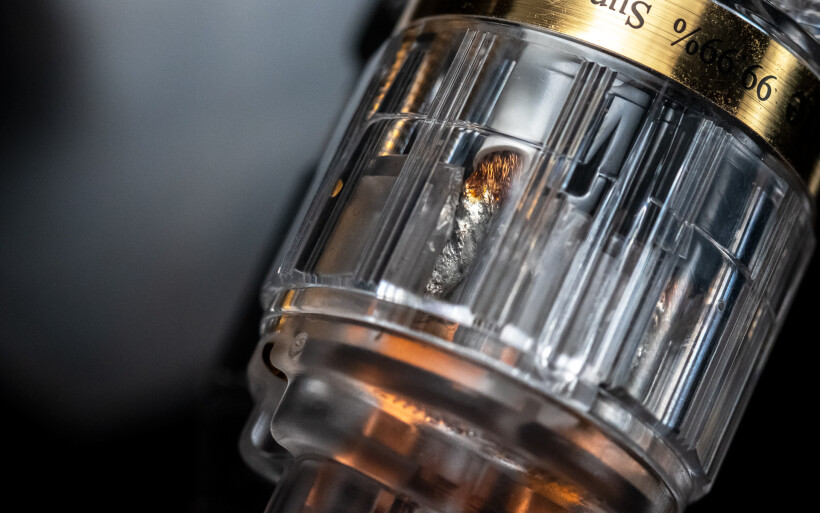 Product types beyond those that made their manufacturers famous tend to nicely stretch portfolios and provide extra income, but rarely are as successful. That’s why many of us untrusty audiophiles wouldn’t buy i.e. a DAC from an audio house primarily known for superb amps no matter how good it might be. Whether we like it or not, such preconceptions and biases turn us into their hostages. Instead be curious, listen and evaluate for yourself, make a leap if needs to be and don’t you dare caring what others say or write about what you just did. As long as you’re happy, you’re fine. This ultimate goal honestly isn’t all that elusive once all irrelevant things are cast aside. That said, I’ve found Boenicke Audio’s three auxiliary products very useful during my journey to that summit. Along the road enough evidence was collected to now emphasize that their maker’s talent goes way beyond speakers. This story is about to further reinforce that point.
Product types beyond those that made their manufacturers famous tend to nicely stretch portfolios and provide extra income, but rarely are as successful. That’s why many of us untrusty audiophiles wouldn’t buy i.e. a DAC from an audio house primarily known for superb amps no matter how good it might be. Whether we like it or not, such preconceptions and biases turn us into their hostages. Instead be curious, listen and evaluate for yourself, make a leap if needs to be and don’t you dare caring what others say or write about what you just did. As long as you’re happy, you’re fine. This ultimate goal honestly isn’t all that elusive once all irrelevant things are cast aside. That said, I’ve found Boenicke Audio’s three auxiliary products very useful during my journey to that summit. Along the road enough evidence was collected to now emphasize that their maker’s talent goes way beyond speakers. This story is about to further reinforce that point.
Boenicke Audio’s S3 speaker cable, IC3 CG interconnect and Power Gate distributor bar are the best of their kind in my roster, which is not too shabby considering that Sven’s business isn’t even known for such products. How that’s possible is no mystery either. Many his developments are heavily infused with parts often considered as unnecessary exoticism not worth bothering. Here the man’s hookup wiring of choice, cone lacquers, signature resonators, quantum purifiers and avoidance of artificial materials wherever possible all come into play. That unorthodox approach heavily focused on resonance control and signal conditioning nets splendid performance as it turns out, but also demands out-of-the-box thinking and curiosity Sven clearly has. He also relies on several highly skilled individuals, i.e. Serge Schmidlin of Audio Consulting and LessLoss’ Louis Motek, whose expertise resulted in non-speaker hardware under the Boenicke banner. In that sense Sven’s knack for targeting just the right technology to build products around is one of his sharpest suits. All Boenicke Audio’s non-speaker designs I’ve been using are based on LessLoss’ in-house developed Common–Mode Auto–Rejecting Cable discovery aka C-MARC that swallowed six years of R&D. The latter company’s founder Louis explained how this elaborate noise-cancelling development can be limitlessly upscaled to increase its efficacy, but each additional fractal replication scale above its core raises complexity, manufacturing time, size, difficulty and naturally also cost. Sven financed pushing this technology to the next level, his S3 speaker cable was the remarkable effect and so was its IC3 CG interconnect sibling released shortly after. Today’s M3 is a power cord built upon their kosher C-MARC veins.
All Boenicke Audio’s non-speaker designs I’ve been using are based on LessLoss’ in-house developed Common–Mode Auto–Rejecting Cable discovery aka C-MARC that swallowed six years of R&D. The latter company’s founder Louis explained how this elaborate noise-cancelling development can be limitlessly upscaled to increase its efficacy, but each additional fractal replication scale above its core raises complexity, manufacturing time, size, difficulty and naturally also cost. Sven financed pushing this technology to the next level, his S3 speaker cable was the remarkable effect and so was its IC3 CG interconnect sibling released shortly after. Today’s M3 is a power cord built upon their kosher C-MARC veins.
Boenicke Audio M3 is flat and quite stiff due to its internal T-shaped felt insert designed to evenly space all three wires glued to its surface, while its outer braid and nicely machined wooden bits on both ends additionally help in keeping everything in place. The product’s ground run based on LessLoss’ small hookup wire sits between far thicker neutral and live next-gen C-MARC legs. Each comprises of a cryogenized 99,99% pure single copper Litz ‘sleeve’ (3.5mm2 of conductive area in total) spun around its tightly packed mercerized cotton core. Each individually enameled 0.125mm copper hair spirally wound clockwise combines with its oppositely polarized counterpart turned counter-clockwise and with the same number of coils per unit distance. Two opposite magnetic fields induced at the same exact location cancel each other out and like so reject noise without any shielding. This braiding geometry also known as humbucker is the very core of the C-MARC principle. Boenicke Audio M3 incorporates 24 bundles of 12 conductive Litz strands each, so 288 Litz wires in total. Half of these individual Litz strands spiral to the left and the other half to the right. This again applies in 50-50 ratio to the resulting bundles, thus forming the second scale fractal effect.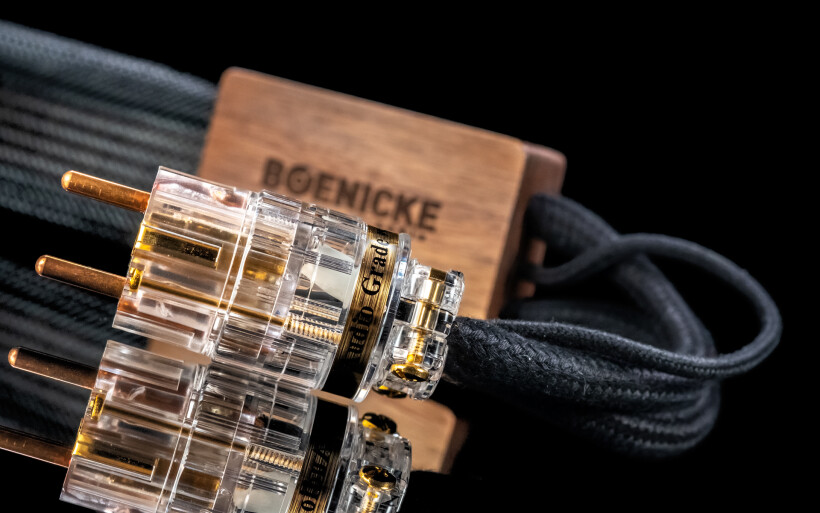 The way how Boenicke Audio M3 was put together means that its separate conductive runs meet no sooner than at their plugs. Speaking of, these parts made by the company IeGO feature translucent enclosures and burnished Tellurium copper (TeCu-Cu) elements. Accordingly to the manufacturer the burnishing process prevents oxidation and is beneficial for sound quality, but its application based on chemicals instead of electroplating lasts for several months. That’s why to restore the effect the M3’s external copper bits need to be wiped clean with a cotton cloth every now and then. The view inside transparent plugs also informs us that all joints there are soldered, which has been Sven’s connection method of choice ever since I can remember.
The way how Boenicke Audio M3 was put together means that its separate conductive runs meet no sooner than at their plugs. Speaking of, these parts made by the company IeGO feature translucent enclosures and burnished Tellurium copper (TeCu-Cu) elements. Accordingly to the manufacturer the burnishing process prevents oxidation and is beneficial for sound quality, but its application based on chemicals instead of electroplating lasts for several months. That’s why to restore the effect the M3’s external copper bits need to be wiped clean with a cotton cloth every now and then. The view inside transparent plugs also informs us that all joints there are soldered, which has been Sven’s connection method of choice ever since I can remember.
Boenicke Audio M3 looks like a costly affair that’s visually more substantial than captive M2 cords of his Power Gate. Although fragile at first glance, both these cable models can take some beating for sure yet are a bit cumbersome to use due to their flat rather wide profiles. This review’s sample also underwent a rather mysterious GreenHarmonia processing, described as unmanipulable to metals and one that permanently applies a special frequency and information pattern to any audio product to increase its performance. Don’t ask me how that outsourced service is executed as that’s all I know anyway. Sven’s very pleased with its impact on his products, so given his track record I imagine that this is yet another finding of his that does something. To investigate what that might be exactly I’d have to compare today’s M3 cord with its non-harmoized version, which is a story for another time. That aside, any Boenicke and non-Boenicke affair up to a reasonable mass and size can have its green badge applied. Should you wish to take this leap, Sven’s address is the one as he’s GreenHarmonia’s exclusive partner. Your component of choice has to be sent to him, then it undergoes the harmonization process and is sent back several days later. Simple. Boenicke Audio Power Gate’s captive M2 cord was the natural sparring partner for the M3 connected to its regular outlet. To map how these cables differed I had to use either one or the other to power my DAC and then line stage and register changes after these swaps. I was told that the M3 loaner soldered to the Power Gate’s internals would’ve performed even better due to the avoidance of mechanical contacts plugs and sockets make. As a standalone type it was thus crippled versus its opponent permanently installed in that wooden distributor box. I also had LessLoss’ three power C-MARCs at my disposal, but comparing any of these to a product infused with the same tech made for a different company didn’t sit right. Instead Boenicke Audio M3 had to fight with the several times dearer Ansuz D-TC Supreme loaner that I still had during this test.
Boenicke Audio Power Gate’s captive M2 cord was the natural sparring partner for the M3 connected to its regular outlet. To map how these cables differed I had to use either one or the other to power my DAC and then line stage and register changes after these swaps. I was told that the M3 loaner soldered to the Power Gate’s internals would’ve performed even better due to the avoidance of mechanical contacts plugs and sockets make. As a standalone type it was thus crippled versus its opponent permanently installed in that wooden distributor box. I also had LessLoss’ three power C-MARCs at my disposal, but comparing any of these to a product infused with the same tech made for a different company didn’t sit right. Instead Boenicke Audio M3 had to fight with the several times dearer Ansuz D-TC Supreme loaner that I still had during this test.
Since stories about Boenicke Audio’s S3 and IC3 CG already explained how the M3’s next-gen C-MARC wiring fared on sonics, there’s no need to reinvent that wheel. It’s just as round and still valid, so a simple recap will do as our base. The S3 put up against Luna Cables Rouge scored higher notes on bass quickness, outline clarity, sensible strength, momentum and general swiftness particularly perceptible on tracks loaded with low synth blows. The former also dug deeper, felt more effortless, was snappier and naturally wider on dynamic contrasts. Its ability to differentiate bass more clearly and also put contents of my playlist under a stronger scope were the clear advantages over the Canadian that turned out softer, more polite, shallower downstairs and rather picturesque in comparison, if not a bit dreamy and less truthful because of that.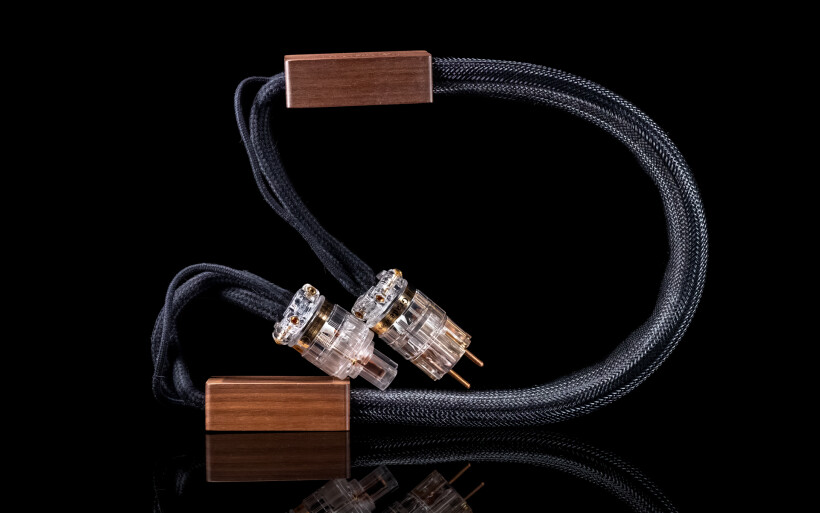 Considering the above the S3 should’ve been the less color-intense of the two if not pale and/or dry, but on vocal and guitar jobs it struck me as even more expressive and vivid all in all. Its greater guitar rawness and sensation of energy without taking away anything from its textural fineness marked the easy win, while finer outlined internally more moist delicate female voices followed. The Rouge’s heavy emphasis on saturation and associated fullness made it rounder, portlier and less keen to differentiate nuanced color shifts and mood swings. That outright tuneful a tad syrupy makeup prettified music, while the S3’s more conservative take built upon its highly potent grain removal, imaging specificity and sheer drive was more balanced.
Considering the above the S3 should’ve been the less color-intense of the two if not pale and/or dry, but on vocal and guitar jobs it struck me as even more expressive and vivid all in all. Its greater guitar rawness and sensation of energy without taking away anything from its textural fineness marked the easy win, while finer outlined internally more moist delicate female voices followed. The Rouge’s heavy emphasis on saturation and associated fullness made it rounder, portlier and less keen to differentiate nuanced color shifts and mood swings. That outright tuneful a tad syrupy makeup prettified music, while the S3’s more conservative take built upon its highly potent grain removal, imaging specificity and sheer drive was more balanced.
Although on treble tasks both contestants were equally smooth and free from excess twitchiness and heat, Boenicke’s cable extracted more dust particles and shimmers from its backdrop, decayed for longer and remained utmost subtle. On that score the Rouge felt weightier, shorter, cloudier and less informative. Its liberally connected closely served aural bubbles prioritized intimacy, boldness and gravity over accuracy and snap to further reinforce its charming personality. The S3 immediately injected extra air around the closest sound sources to effectively increase the distance from my ears to them and that alone changed the entire perspective. Interestingly the Swiss’ outlines weren’t any smaller than those of the Rouge, yet their explicit presentation on expansive open landscapes was beyond the latter’s narrower, shorter and less enveloping spatial frames. The S3’s larger backdrop, deeper bass, higher imaging precision, extra radiance and freshness marked is as the sensibly sportier, mightier, feistier, more direct and impactful of the two. Although its profile was less romantic and laid back versus the Rouge, I’ve found it more exciting, informative and higher-tiered all in all.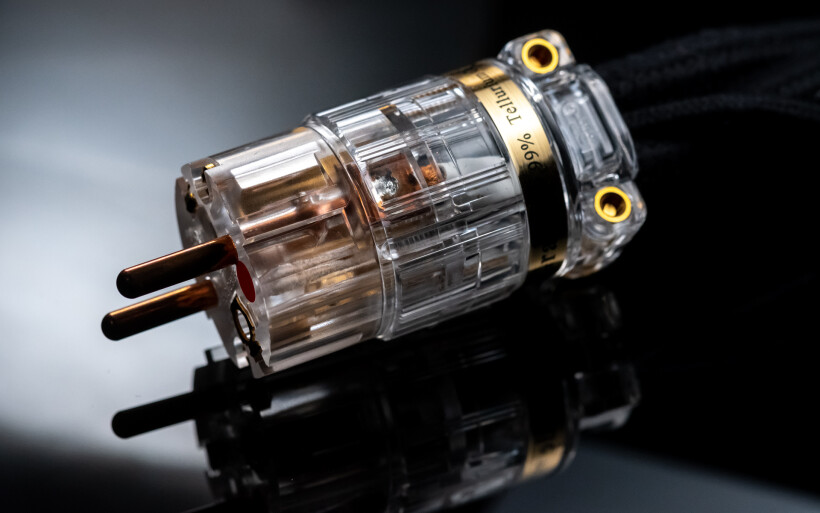 The S3’s ability to cast distinctively complex images, generously oxygenate their space, effortlessly propagate tons of air my way and maintain all instrumental and vocal sizing and textures in check resulted in the off-the-charts sensation of tactility and momentum without any hints of dilution. The Rouge couldn’t keep up and its far lower sticker rather accurately reflected that. Although exceptionally developed on tonal qualities, Sven’s cable didn’t flaunt that or any other trait to instead remain enjoyably levelled all across the board. That particular evenness and completeness were in fact its and all other previously auditioned C-MARCs’ primary attractors. Their calm soothing somewhat sweet background blackness is the well-known foundation that supports color saturation, richness, mellowness, detail retrieval, coherence and the lot, but not agility, power and high contrast pop… or so I thought. Boenicke Audio’s S3 and IC3 CG proved me wrong. Both brimmed with that fetching organic darkness indeed, but also were exceptionally speedy slamming powerful types capable of instantly summoning rapid fabulously controlled hits out of virtual nothingness. Their silent backbones additionally infused with superb might translated into sonic intensity and overall suchness that had me thoroughly impressed.
The S3’s ability to cast distinctively complex images, generously oxygenate their space, effortlessly propagate tons of air my way and maintain all instrumental and vocal sizing and textures in check resulted in the off-the-charts sensation of tactility and momentum without any hints of dilution. The Rouge couldn’t keep up and its far lower sticker rather accurately reflected that. Although exceptionally developed on tonal qualities, Sven’s cable didn’t flaunt that or any other trait to instead remain enjoyably levelled all across the board. That particular evenness and completeness were in fact its and all other previously auditioned C-MARCs’ primary attractors. Their calm soothing somewhat sweet background blackness is the well-known foundation that supports color saturation, richness, mellowness, detail retrieval, coherence and the lot, but not agility, power and high contrast pop… or so I thought. Boenicke Audio’s S3 and IC3 CG proved me wrong. Both brimmed with that fetching organic darkness indeed, but also were exceptionally speedy slamming powerful types capable of instantly summoning rapid fabulously controlled hits out of virtual nothingness. Their silent backbones additionally infused with superb might translated into sonic intensity and overall suchness that had me thoroughly impressed.
Boenicke Audio’s S3, IC3 CG and Power Gate all are C-MARCs in one way or another, so products geared for elevating nearby components’ performance without asking for anything specific in return. Needless to say, I’ve found this highly universal action free from any obvious sonic drawbacks and very useful in my work. Today’s M3 isn’t any different and just as silent, speedy, powerful, tonally generous, spatially grand, vivid, composed and thoroughly sorted on all fronts as Sven’s S3 and IC3 CG. After auditioning all three one at a time their identical profiles didn’t factor in, but each’s impact on my system did. Although they sounded the same without a miss, the M3 was more audible than the IC3 CG that positioned itself above the S3 in this regard. Clean power matters was the obvious motto. With that out of the way it was time to finally compare the two Ms.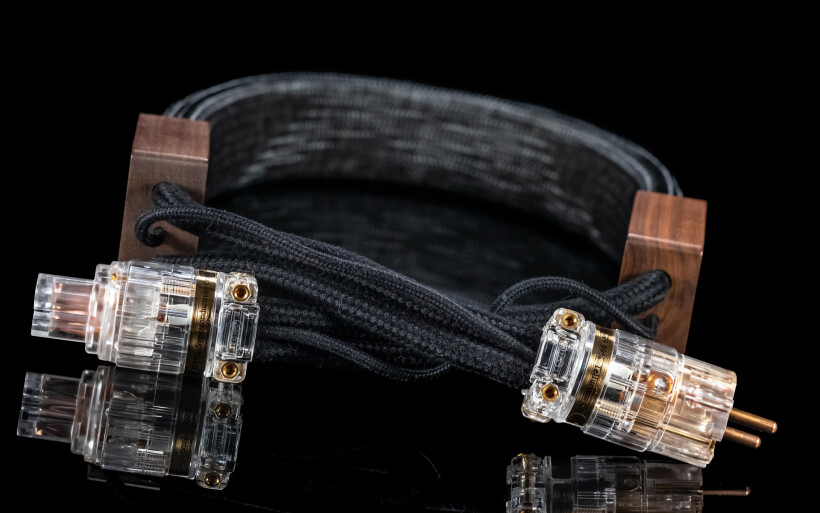 The M2’s nicely hydrated precise sound is meticulous, coherent, posh and safe enough for me to not luster for more, but after experiencing the M3 that security faded. Both built upon the same albeit differently tiered LessLoss tech were destined to share its noise-rejecting DNA and I’d be surprised if they didn’t, but this wasn’t enough to make them identical performers. The main disparity narrowed down to two various intensity levels and wasn’t small by my standards. Just several introductory back ‘n’ forths were enough to map which cord my DAC fancied more and why, but that gap heard from the get-go was already telling and could only grow larger from there.
The M2’s nicely hydrated precise sound is meticulous, coherent, posh and safe enough for me to not luster for more, but after experiencing the M3 that security faded. Both built upon the same albeit differently tiered LessLoss tech were destined to share its noise-rejecting DNA and I’d be surprised if they didn’t, but this wasn’t enough to make them identical performers. The main disparity narrowed down to two various intensity levels and wasn’t small by my standards. Just several introductory back ‘n’ forths were enough to map which cord my DAC fancied more and why, but that gap heard from the get-go was already telling and could only grow larger from there.
Although the M2 and M3 were equals on foundational qualities, the latter had the upper hand on agility, openness, expansiveness and raw power. These advantages turned it into an even more precise and investigative specimen that revved higher, spanned wider dynamic contrasts and was spatially more liberated. Its lower-tiered kin staged as far and wide, was tonally as gifted and had its space as black, but still came off as lazier, bloomier, more distant, less ripped, a touch hooded and not as pronounced. Its denser less enveloping sound filled my listening room with murkier air that stole some luminosity and torque without giving anything else in return. Long story short, the more comparisons I had under my belt, the clearer the M3’s superiority became, which leaves us with two simple takeaways. Sven’s own C-MARC wiring inside that power cord worked just as brilliantly as in his other cables I’ve sampled and its edge over the M2 was also demonstrable enough to justify the extra expense. Here’s where I’d normally finish this report and quite possibly in red, but Ansuz’ recently reviewed behemoth prevented that.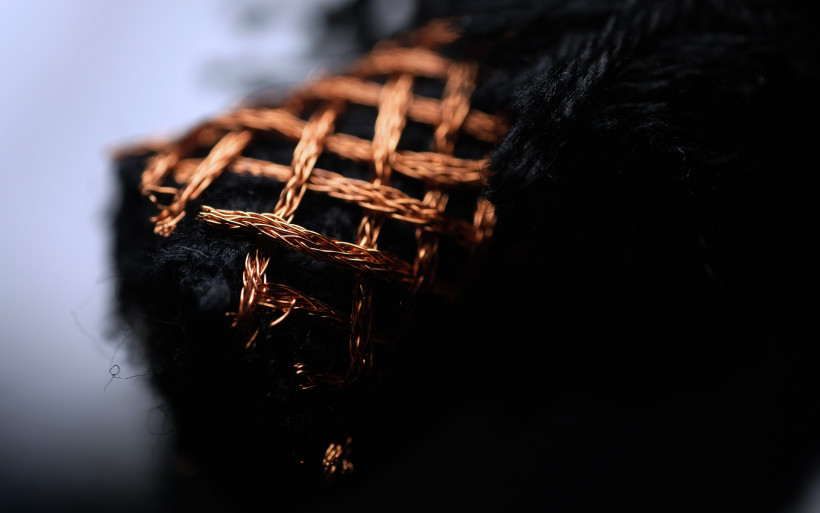 Sound quality as we subjectively perceive it is a matter of perspective that determines our reference points and changes along with gained experience. On that note, had the Boenicke Audio M3 arrived half a year ago, I would’ve named it as most vigorous, powerful, tuneful and accomplished of its breed, but that title went onto Ansuz D-TC Supreme’s account and after comparing these two rightfully so. Both were as developed on canvas sizing, background cleanliness, smoothness, wide color range and elegance, but most other aspects set them apart. The Dane’s noticeably leaner yet feistier, more muscular, radiant, explosive, investigative and electric approach radically changed the pace and had the Swiss in the calmer, rounder, benign and dynamically narrower corner. Prior to their fight seeing the latter there wouldn’t have even crossed my mind, but on quickness, pronunciation, accuracy, openness and sheer horsepower Ansuz’ €36’000 power cord truly is invincible in my book.
Sound quality as we subjectively perceive it is a matter of perspective that determines our reference points and changes along with gained experience. On that note, had the Boenicke Audio M3 arrived half a year ago, I would’ve named it as most vigorous, powerful, tuneful and accomplished of its breed, but that title went onto Ansuz D-TC Supreme’s account and after comparing these two rightfully so. Both were as developed on canvas sizing, background cleanliness, smoothness, wide color range and elegance, but most other aspects set them apart. The Dane’s noticeably leaner yet feistier, more muscular, radiant, explosive, investigative and electric approach radically changed the pace and had the Swiss in the calmer, rounder, benign and dynamically narrower corner. Prior to their fight seeing the latter there wouldn’t have even crossed my mind, but on quickness, pronunciation, accuracy, openness and sheer horsepower Ansuz’ €36’000 power cord truly is invincible in my book.
If it looks like the D-TC Supreme surpassed the M3 the same way the latter outmatched the M2, that’s not quite right. Boenicke’s and Ansuz’ top dogs weren’t similar and the way how my platform’s sound decompressed into space was an entirely different sensation with each. If I had to point out one specific thing that divided these power cables the most, that would be it. The Dane’s pointy pencil pressed harder outlined virtual shapes closer to my ears, finer separated and internally still gloriously juicy, while all the extra O2 just behind them made the entire view in front deeper. Elastic tight bass blows that reached lower, smacked sensibly harder and effortlessly pushed larger airwave bursts my way sealed the deal. Upon combining all that the D-TC Supreme’s voicing felt sensibly more surrounding, touchable, articulated, instantaneous and also marvelously spiced in that sense.
Upon getting back to the M3 there was no pain, however. Although mellower and easier on jabs and crack, it packed no lesser punch than before and still from the other end of lazy and bloated. It also staged far too tall and wide and was too readable, texturally fruity, fleet-footed and vivacious to just succumb before the five times more expensive Danish king. At a performance level this high that seems silly, so a simple bow and second place at the same table will do. At the end of the day I’ve found Boenicke Audio M3 very much extreme on its own right; superbly voiced, highly efficacious and exceptionally gifted on hardware compliance. I also think that those willing to try it out will agree.
Associated Equipment:
- Amplifier: Trilogy 995R, FirstWatt F7, Enleum AMP-23R
- DAC: LampizatOr Pacific (KR Audio T-100 / Living Voice 300B + KR Audio 5U4G Ltd. Ed.)
- Speakers: Boenicke Audio W11 SE+, sound|kaos Vox 3afw
- Transport: Innuos Statement
- Preamplifier: Trilogy 915R, Thöress DFP
- Speaker cables: Boenicke Audio S3, LessLoss C-MARC
- Headphones: HifiMan Susvara
- Speaker signal conditioning: LessLoss Firewall for Loudspeakers
- Anti-vibration conditioning: 12x Carbide Audio Carbide Bases (under DAC, preamp and speakers)
- Interconnects: LessLoss Entropic Process C-MARC, Boenicke Audio IC3 CG
- Power components: Gigawatt PC-3 SE EVO+/LC-3 EVO, LessLoss C-MARC, LessLoss Entropic Process C-MARC, Boenicke Audio Power Gate, ISOL-8 Prometheus
- USB components: iFi audio Mercury3.0
- Rack: Franc Audio Accesories Wood Block Rack
- Network: Fidelizer EtherStream, Linksys WRT160N
- Music: NativeDSD
Retail prices of reviewed components in EU (excl. tax):
- Boenicke Audio M3 1/1.5/2/2.5/3m: CHF6’260/6’610/6’960/7’311/7’641
Manufacturer: Boenicke Audio



































